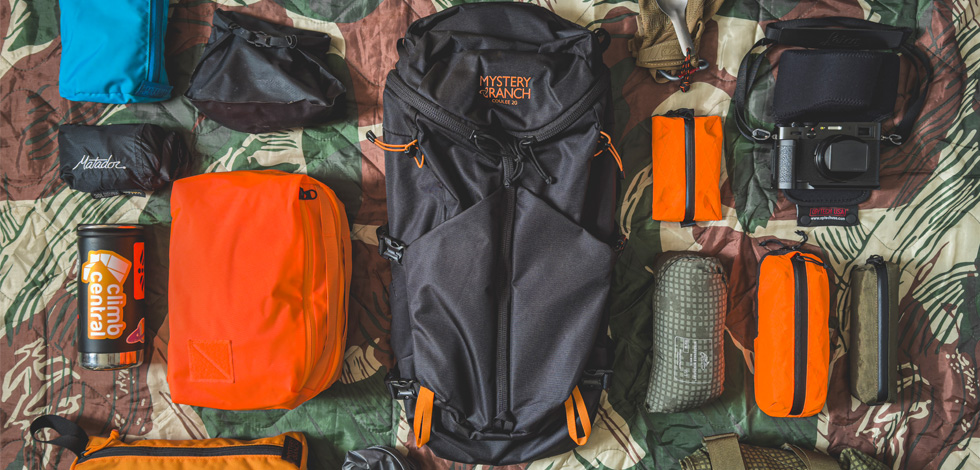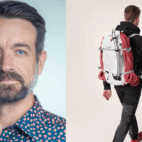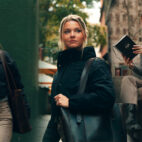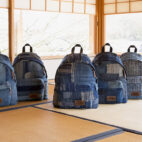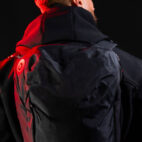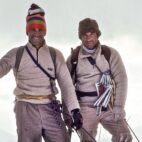The Jungle Line | A Lightweight Adventure Through the Malay Peninsula
Having lived in Singapore for approaching a decade, I have found it easy to become absorbed by the fast-paced metropolitan lifestyle ubiquitous in most major international cities. People tend to carry the same items with them every day; to work, to the coffee shop, there is little variation in the homogeneity of our daily carry. It can feel like life on rails, so I take every opportunity I can to switch track, and think about packing gear for a very different kind of adventure.
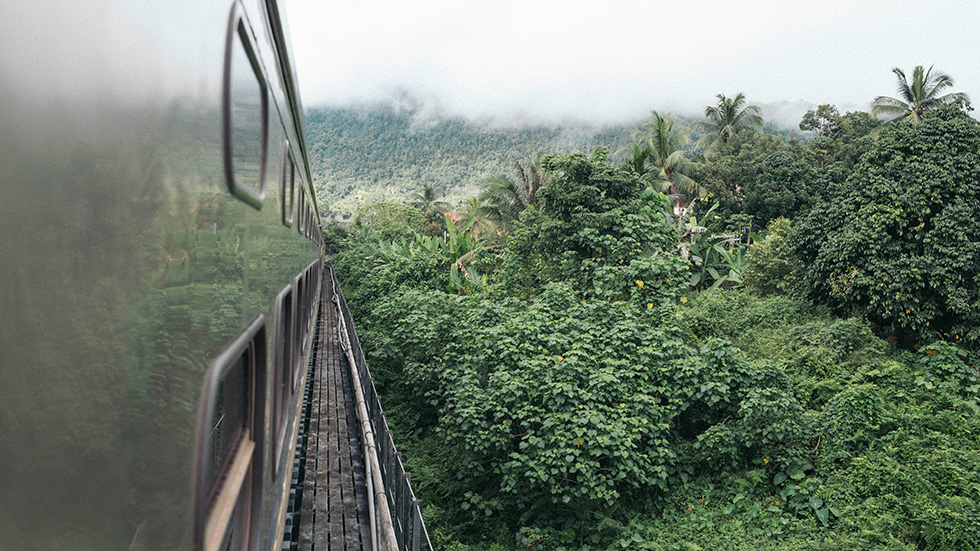
I am fortunate that my profession permits me to travel. Often my research or documentary work will take me to places and regions requiring a degree of risk mitigation and utilizing specialized equipment to help me to complete the task at hand. The biggest issue I face is weight, which necessitates splitting the load between packs and duffels, or specialized cases. All of which increase my profile and require extra logistics planning at a greater expense. I much prefer to work and travel as lightly as possible. I don’t wish to be encumbered by too much gear, as I feel it can serve as a physical barrier to making the work, and also distracts from getting immersed in the story. So when my research into communism in Southeast Asia led me to investigate the events of the Malayan Emergency, I knew my itinerary would involve a visit to the former headquarters of the Malayan Communist Party located in the mountains of Yala state, Southern Thailand. From Singapore, I would travel the Malaysian East Coast Jungle Line railway to the border with Thailand. After walking across the border and switching to local rail for Yala, I’d make for the caves located near the town of Betong. After which I would follow the story of Force 316 and the Death Railway North to the River Kwai, returning via Bangkok and the West Coast line to Singapore. An adventure with a single rule, no air travel. Overland travel is a slower and mediatory experience. It’s also much cheaper, the cost of the ticket from Singapore to Thailand being only RM55 or around $12 USD. Due to a continuing low-level Islamic insurgency, a counterinsurgency operation is being conducted in Yala province which has resulted in increased armed military security and frequent checkpoints. I wasn’t sure what to expect so I decided to take only one camera and one bag and travel as safely as I could, while reducing as much friction as possible.
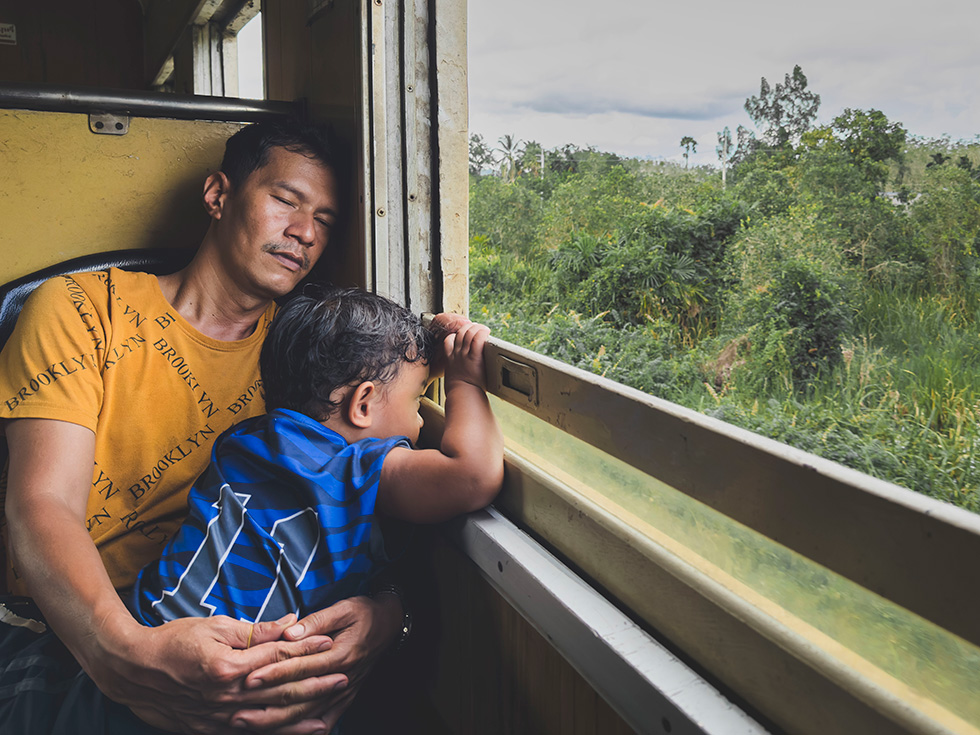
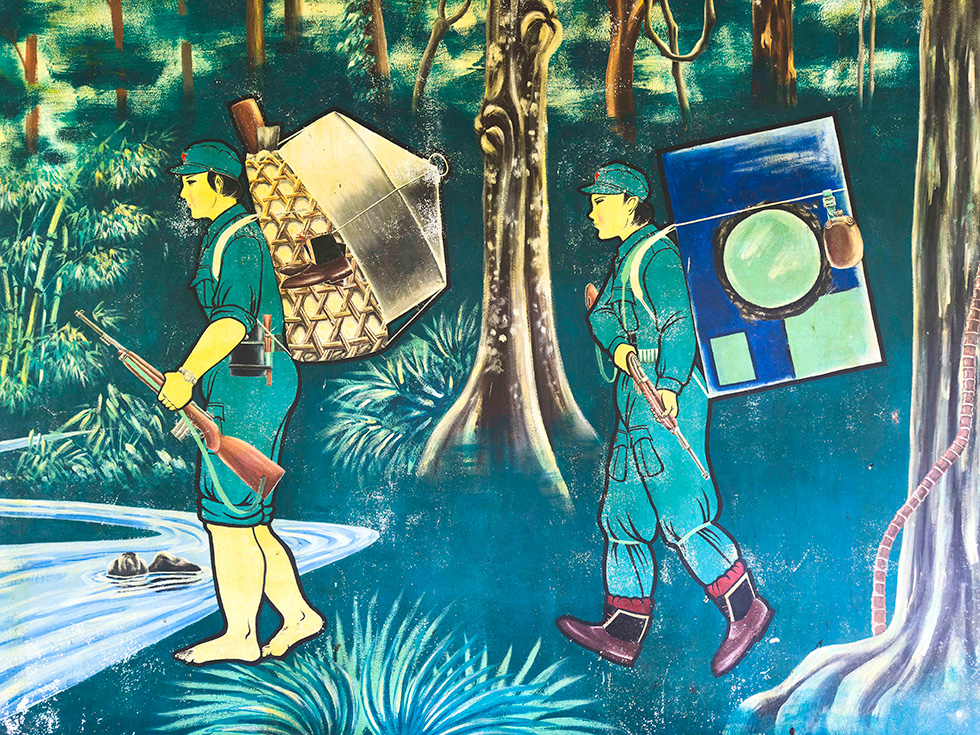
So I have this hypothetical one-bag travel setup. I often say you should be able to travel and sustain yourself with only a 20-liter pack. Bear in mind I live in the warmth of the tropics and good food can be found everywhere, and resupply is never too far away. The Mystery Ranch Coulee 20, as the name implies, is a 20-liter lightweight travel pack that became available in 2023. Weighing only 1.2kg, it features a new Lightweight Trail yoke, which is constructed using slightly thinner and therefore lighter diameter webbing. This is worth noting as there will no longer be the option to switch yokes from older packs, or with packs not in the same product range. The Coulee 20 is made from a new 100% recycled nylon 210D Robic dobby with a DWR coating and has a double-layered bottom for long-term durability. The Coulee 20 is a Tri-Zip pack which means it features an easy rip-top opening and full-length YKK zip, making packing and unpacking fast and easy. If packed correctly it can stand on its own, a feature that’s very useful when passing through checkpoints or standing at check-in desks.
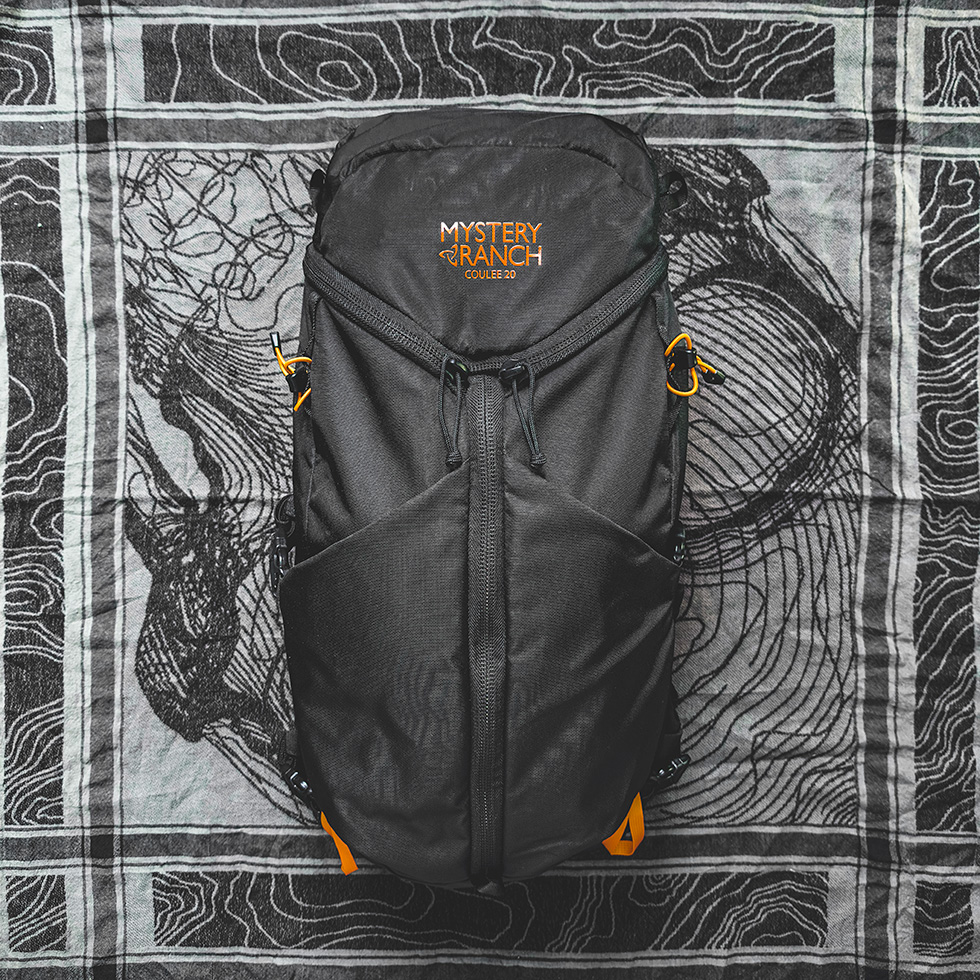
The interior is a very simple space without any organization as such, although there is the option to attach a removable Small Quick Attach Zoid Bag to the interior just below the lid. The addition of a small removable bag provides quick access to travel essentials such as first aid kits, tech pouches, and power banks. The reverse-opening lid pocket is basic but large enough to accommodate handy items like headphones, pocket books, passports, hand wipes, and snacks. Located at the bottom along the sides of the pack are two water bottle pockets made of what appears to be Tweave Durastrech. I have learned to appreciate and respect Durastretch over the years, it really is an amazingly durable material. The bottle pockets will take a full-size Nalgene bottle at a stretch. Also located on each side are two compression or tool straps which can be used to both secure items such as bottles in the pockets, or hold longer equipment such as tripods. In addition, there are two dedicated tool loops on the front of the pack for walking sticks or axes. On either side of the central YKK zip there are a further two long torpedo-like pockets made of nylon 210D Robic dobby which expand using a concertinaed Durastretch design. These pockets can be used to quickly stash extra layers, footwear, water, wine, or whatever you like. The design and integration of these two extra front pockets are really what drew me to the pack, and now having experienced real-world use, I can say honestly that I wasn’t disappointed. The combination of features on the Coulee 20 means that I no longer need to modify my existing packs as much, nor do I need to compromise on weight or durability when traveling. I still have a need for modularity though, as carrying a backpack isn’t always low-key and accessing recording gear on the hop is not that easy. So I needed a smaller bag, something I could stash away, then throw over my shoulder on the bike as I rode up into the mountains while allowing access and organization for papers at checkpoints. Enter the Helikon-Tex Claymore Bag.
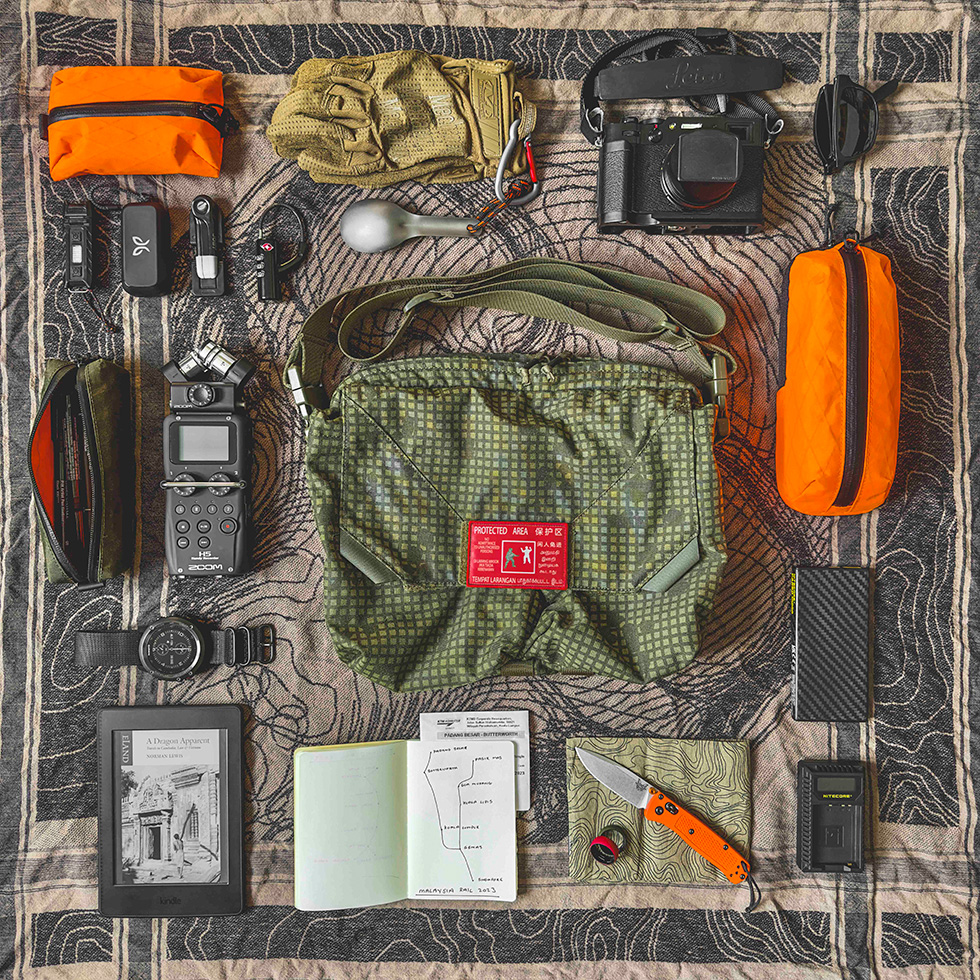
The M7 Bandoleer, or Claymore Mine Bag was first introduced during the 1960s. It was originally designed to carry an M18A1 Claymore anti-personnel mine and detonator together, each within a separate easy-to-open front pocket. The bags were intended to be discarded after use; however, the design proved to be very useful so the bags were often kept and repurposed. There have been a number of modern iterations by leading manufacturers; however, they always seemed to fall short for my personal requirements. I needed something that could hold a small professional Fujifilm camera, a dedicated Zoom H5 sound recorder, my paper notebook, documents, and an 11-inch iPad Pro. To be able to accommodate these items in a small robust and as lightweight bag as possible means I’m always looking for new alternatives. I have been very impressed with the Wotancraft Pilot 7L; however, on this trip I needed something I could roll up and stash away if unneeded. The Helikon-Tex Claymore Bag is made from 500D Cordura fabric and is available in a plethora of colors and camouflage patterns. It features a total of fourteen pockets which are thoughtfully placed to provide a great deal of organization. The rip-open front flap reveals the traditional two-pocket design featuring a secure bungee and lock-off closure; each is sized to hold a full-size Nalgene bottle and has a further two slip pockets at the rear. The front flap features both hook & loop and two sets of press-stud fasteners. A pair of YKK zippers run along the top of the rectangular rear compartment. Inside along each side are two sets of divided pockets facing each other. Each of these pockets is sized to comfortably fit a passport or notebook. In addition, there is also a full-length zipped pocket inside, and two loops to secure lanyards and gear. On the outside two rows of PALS webbing can be found on either side, and a further longer row and grab handle are located along the top of the rear, below which are a further three flat pockets sized to fit standard rifle magazines, the perfect fit for cell phones and passports. My only complaint is the use of metal grommets on the bottom of these pockets, as they could easily result in a scratched phone screen. As a result, I added a layer of high-density foam and Tenacious Tape to the inside so I could place my iPhone Pro without any concern.
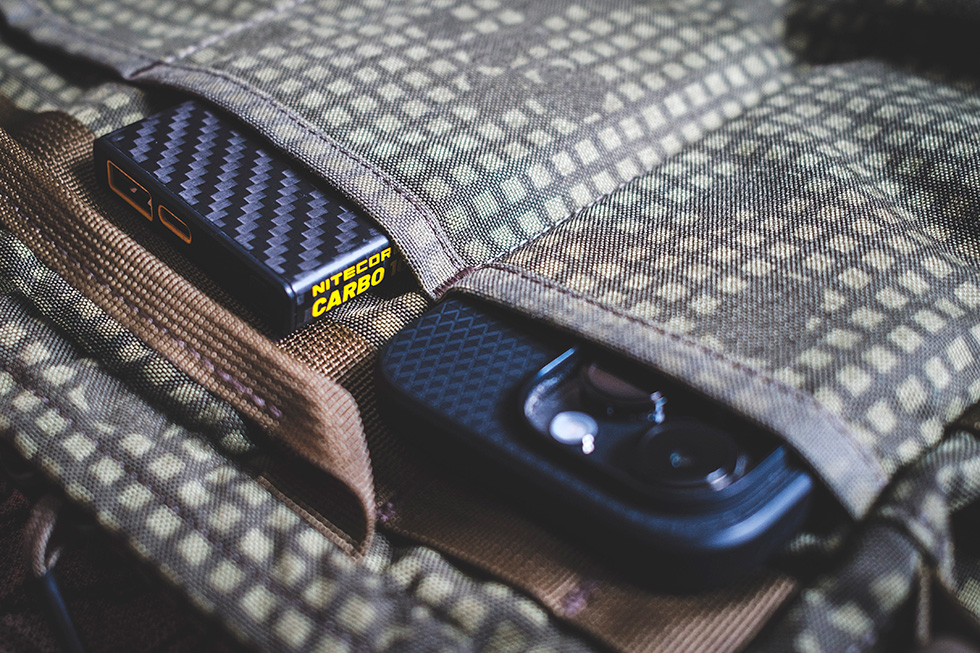
Limited to 20 liters, I needed to think very carefully about clothing. Generally, Southeast Asia is pretty warm, but up in the mountains the mornings can be especially cold; so too can the overnight trains. Staying organized was also important as passing through changing climates it’s useful to know where specific items of clothing are at any given time. My system has evolved into a series of color-coded stuff bags and packing cubes, the latest addition being an EVERGOODS Transit Packing Cube 8L in Hot Orange. For a few years, I’ve been using two Peak Design Small Packing Cubes; side-by-side they fit into a 20L pack, leaving a little bit of space for a camera and tech pouch. They work well, but I’d still like a little bit more space for a hoodie or jacket so the new Transit Packing Cubes seemed to be the logical next step. The clamshell design of the cube allows for a greater degree of organization while also helping to compress the overall size. I use the packing rule of threes when traveling away for more than a few days. Three sets of socks, pants, tops, and bottoms. I also make sure all my gear is quality and backed by a solid warranty and customer service. My socks are by Darn Tough and my underwear is Icebreaker Merino, as are my two base layers and hoodie. Icebreaker’s Merino is easy to wash, quick drying, and stays fresher longer; I’ve been using it for nearly two decades. I also packed a couple of pairs of long pants and a shirt. I like to train pretty regularly so I took my running shorts and an Under Armour HeatGear Shirt packed in a small blue Mystery Ranch Zoid bag, together with a Matador large Ultralight Travel Towel and Sea to Summit Lite Line Clothesline; this made up both my running and swimming kit. The Matador FlatPak Toiletry Case and Soap Bar Case held my wash kit. I also carried a Sea to Summit Lightweight 8L Dry Bag for dirty and wet gear, and a zip lock bag containing washing power. It being essential kit, my Icebreaker hoodie is stashed inside its own medium orange Mystery Ranch Zoid bag, making it easy to grab, and the lightweight Helikon-Tex Windrunner Windshirt completed my packed clothing.
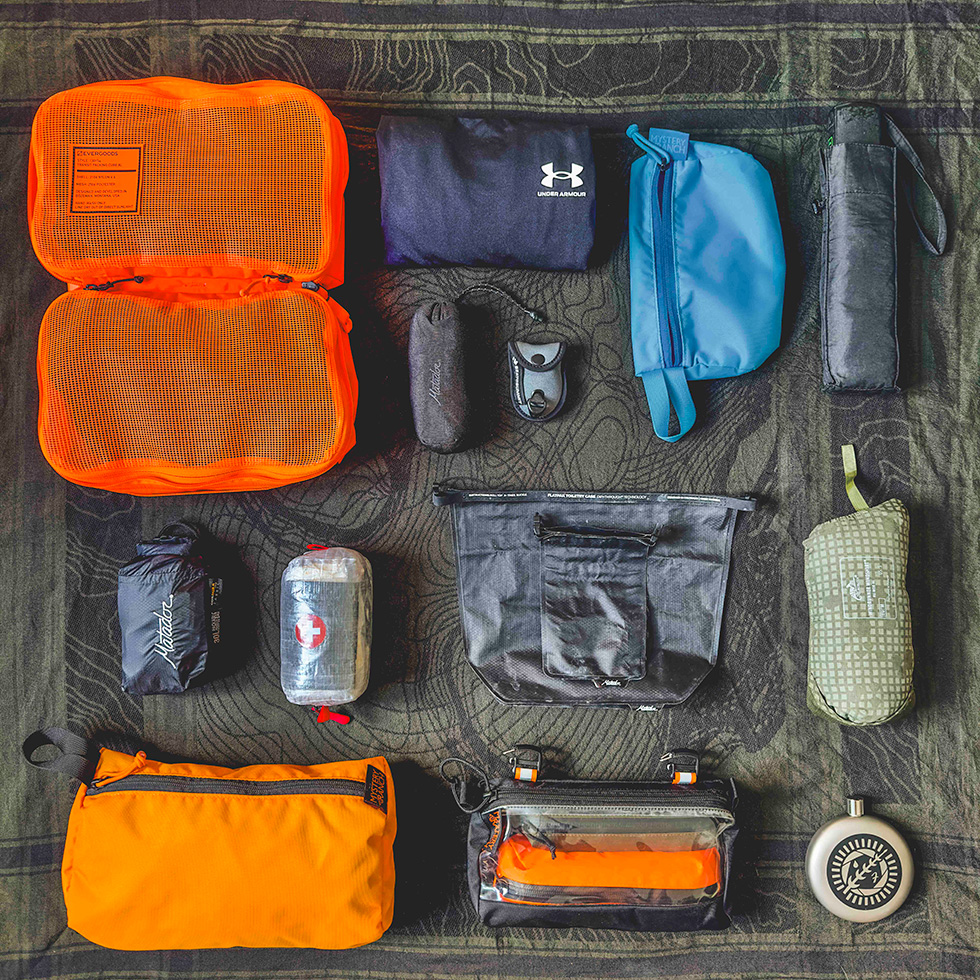
Outside the pack I kept my insulated Klean Kanteen, a Fulton automatic umbrella, and the quintessential boonie hat. I intentionally left pockets empty for water bottles and snacks I’d pick up along the way. Back inside the pack, the Small Quick Attach Zoid Bag held an ALPAKA Pencil Case Pro, which has become my default tech kit, and an ALPAKA Pencil Case V2, which is as the name would suggest my pencil case. I could also fit in the Coulee’s water bladder sleeve a Kindle Paperwhite and a Small Magpul DAKA Window Pouch containing a couple of passport-sized Muji notebooks and travel documents. The Helikon-Tex Claymore bag could be rolled and folded away inside, leaving just enough space for my camera and sound recorder. The top pocket or ‘brain’ of the Coulee 20 contained smaller items including a topo handkerchief, a titanium spoon, and a Benchmade Mini Bugout for fruit and opening food packets. A pair of folding polarised sunglasses by Indonesian outdoor brand Eiger. A small ALPAKA pouch containing an Apple charging cable, Jaybird Vista Earbuds, a Nitecore Thumb LEO torch and a Joby GripTight Micro Stand. Also a Nitecore CARBO 20000 carbon fiber power bank, and for use on the bikes I had a pair of Mechanix Specialty Vent Covert gloves.
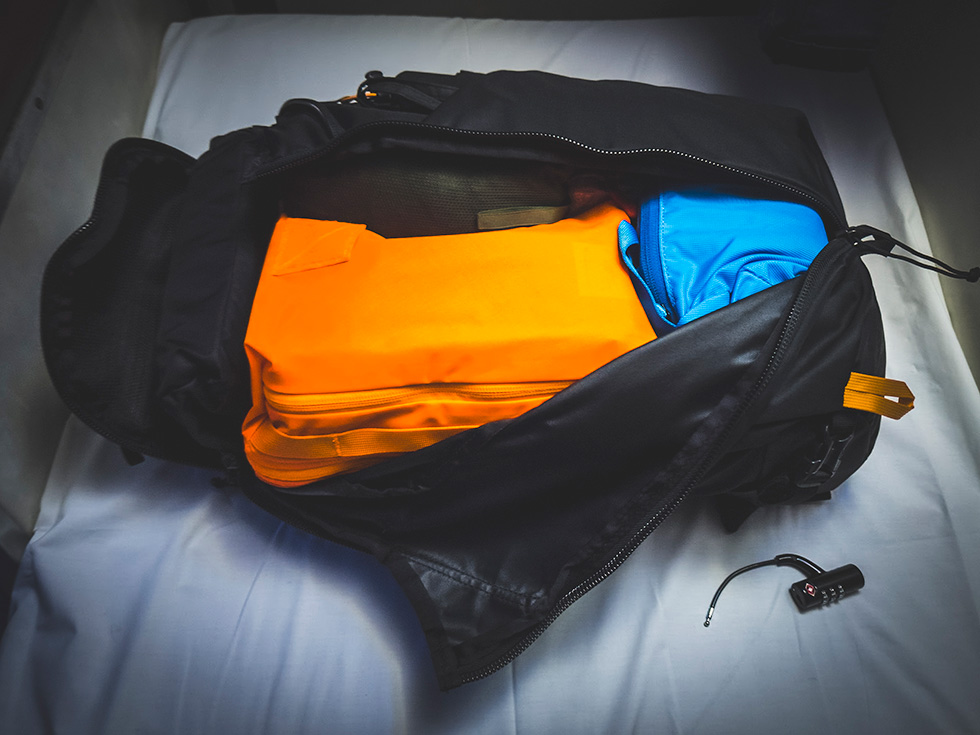
Travel security is something that I take very seriously. Having had a few incidents of theft over the years I can understand the inconvenience and emotions of finding yourself far from home, your trust violated due to the criminal intentions of another. It happens, and insurance helps, however having a working risk mitigation strategy is also useful. Traveling overland through the Malayan Peninsula was going to take a few days, with long-distance overnight train travel being a necessity. In Southeast Asia luggage on overnight trains is typically placed in metal racks next to your sleeping berth. Once you’re in your berth the curtain which provides privacy also obscures the ability to keep an eye on your gear. Throughout the journey groups of people and hawkers selling food will be getting on and off the train at random, and despite the good reputation of the locals it only takes one bad apple, local or foreign, to ruin your journey.
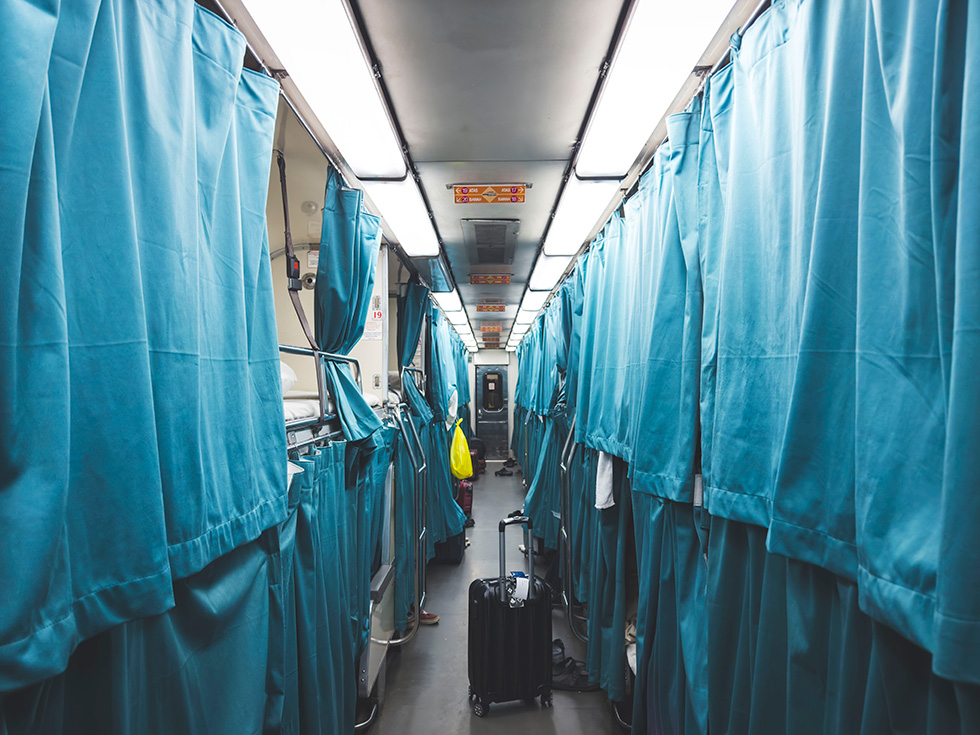
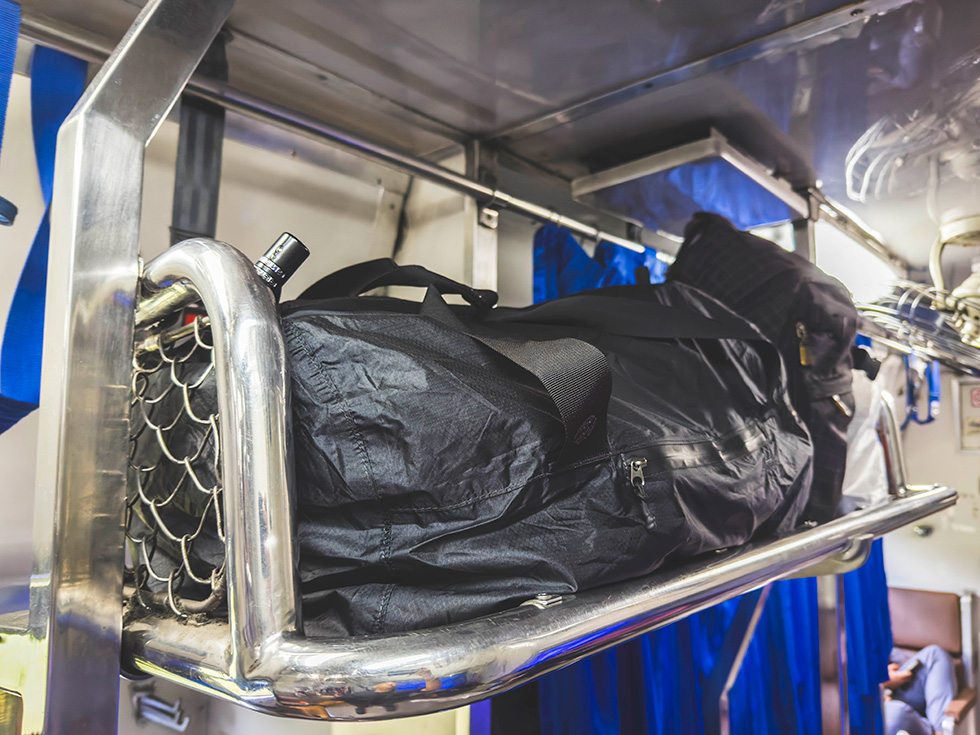
The strategy I like to use usually involves a lockable duffel, usually something like a Small North Face Base Camp. But this trip was one bag only, so I decided to bring my Matador Transit30 2.0 packable duffel. It took me a while to find the right packable duffel. It needed to be both small and light when folded, fit a 20L pack, and also feature a zip and closure that could be secured using a wire TSA lock, which could also be used to secure the pack to the luggage rack.
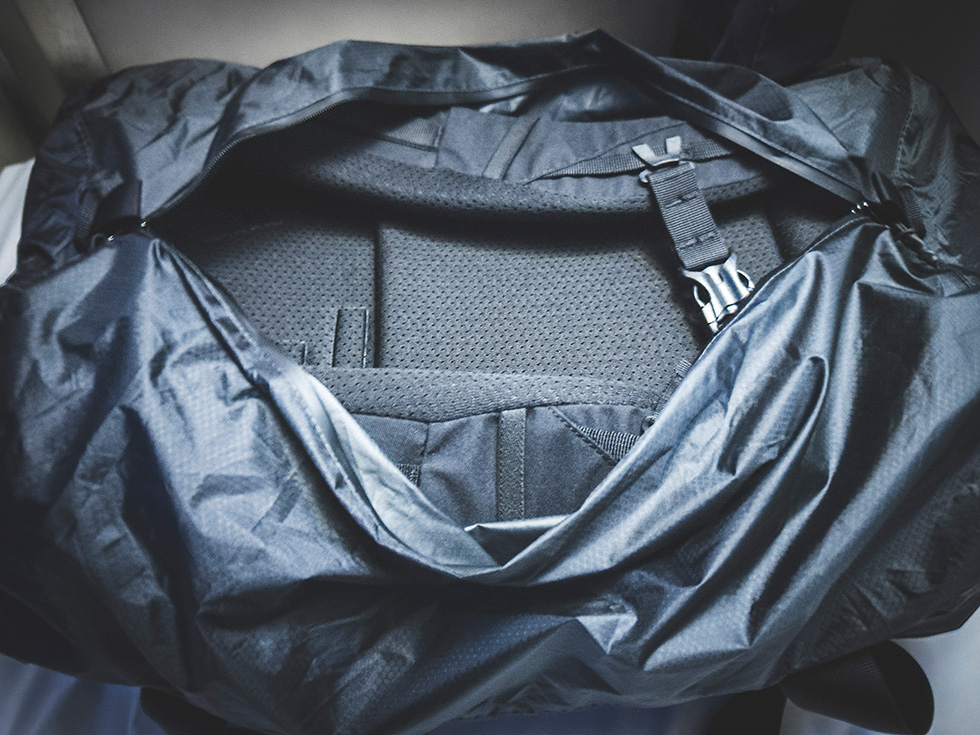
The Matador Transit30 2.0 fulfils these requirements while also eliminating an all-important issue of our time: straps up or straps down.
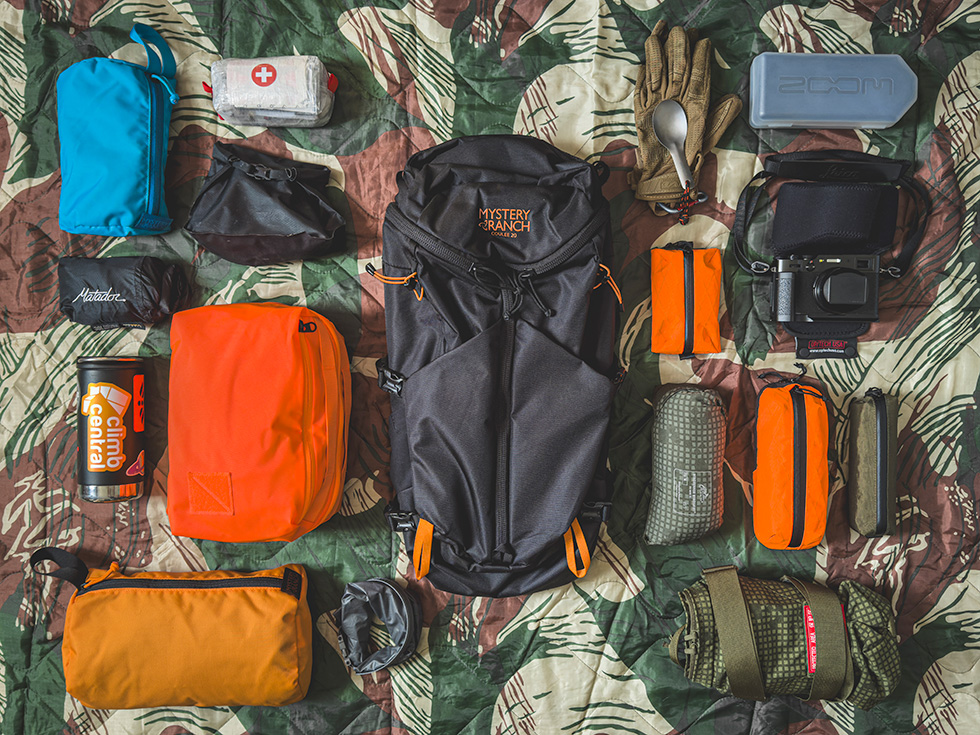
In summary, I shall continue to test my one-pack hypothesis with upcoming trips in Northern Europe and colder locations. However, in warmer climates, whether exploring communist cave systems or roaming around Bangkok, I can say that a 20-liter pack is a perfectly reasonable size, even if traveling until you reach the end of the line, or eventually run out of steam.
Many thanks to Visual Documentarian, Researcher, and Producer Matthew Aslett for this article.





 Carry Awards
Carry Awards Insights
Insights Liking
Liking Projects
Projects Interviews
Interviews
